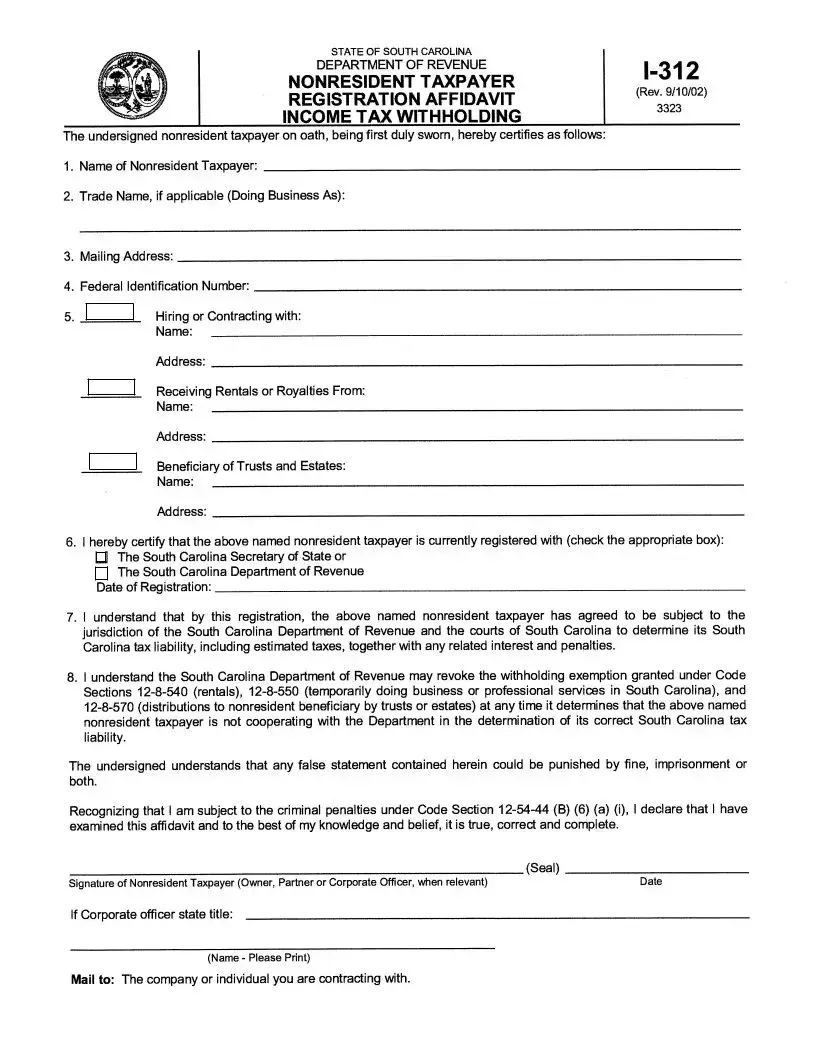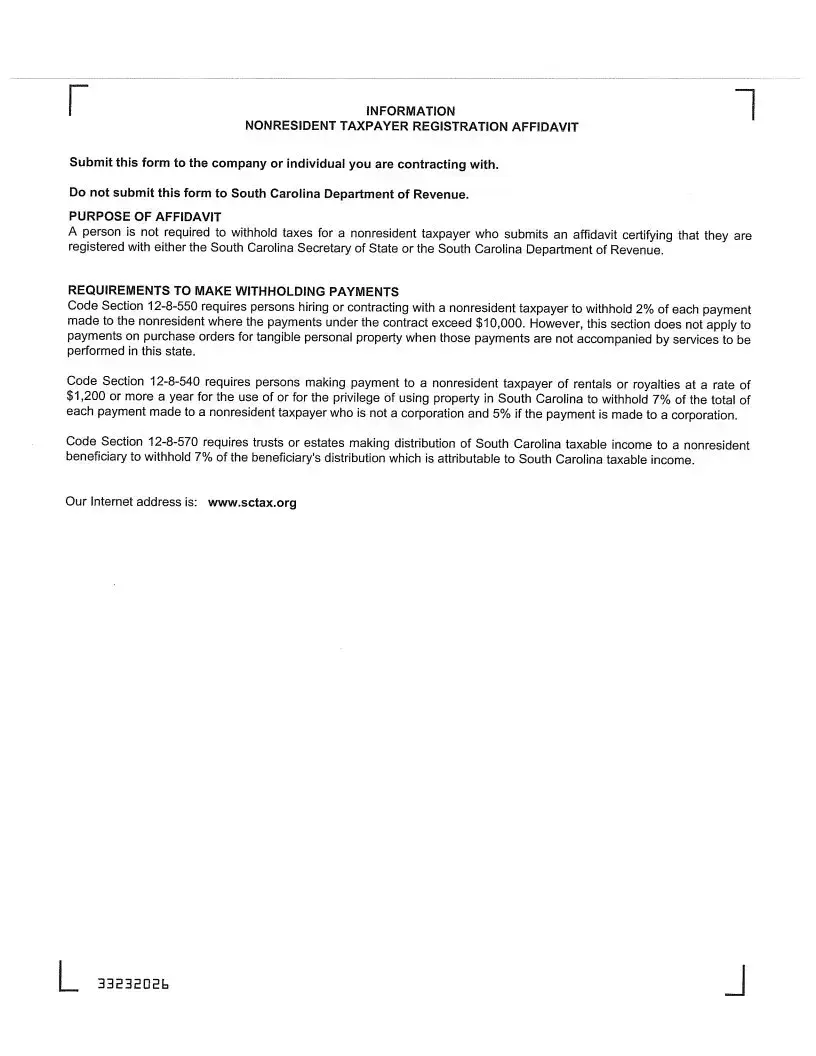The Form 1099-MISC is one document that shares similarities with the I-312 form, particularly in the context of reporting payments to nonresidents for tax purposes. Both forms serve the purpose of ensuring compliance with tax withholding requirements on payments made to individuals or entities not based in the jurisdiction of the payment origin. The Form 1099-MISC, however, is more broadly applicable, covering various types of payments beyond temporary services or rentals, and it includes payments to residents as well as nonresidents.
The Form W-8BEN, Certificate of Foreign Status of Beneficial Owner for United States Tax Withholding, is another document that has parallels with the I-312 form. It is used by nonresident aliens to report their status and claim tax treaty benefits, if applicable. Like the I-312, the Form W-8BEN helps determine the correct tax withholding rate. Nonetheless, the Form W-8BEN is utilized in a wider range of contexts, including passive income like dividends and interest, not limited to personal services or business activities within the United States.
The Form 8233, Exemption From Withholding on Compensation for Independent (and Certain Dependent) Personal Services of a Nonresident Alien Individual, also resembles the I-312 form in its function. It specifically allows nonresident aliens performing independent personal services in the United States to claim an exemption from withholding on the basis of a tax treaty. Like the I-312, the Form 8233 is an affidavit where the nonresident asserts their claim for lesser or no withholding based on treaty benefits, narrowly focusing on personal service compensation.
The Form W-9, Request for Taxpayer Identification Number and Certification, contrasts with the I-312 form by being used primarily within the domestic (U.S.) context but is similar in its role of ensuring the correct tax withholding and reporting. Individuals and entities provide their Taxpayer Identification Number (TIN) on the W-9 to the entities that pay them, enabling these entities to accurately report payments to the IRS. The I-312, conversely, is more focused on nonresident activities within a specific state (South Carolina) and their tax obligations there.
The Certificate of Compliance for Withholding Tax is a document necessary in several states that, like the I-312 form, certifies a nonresident has complied with state tax withholding requirements on income earned within the state. Although specifics vary, this certificate generally serves the same purpose as the I-312 in establishing a record of tax obligations being met by nonresidents engaged in business or personal services.
The IRS Form 1042-S, Foreign Person's U.S. Source Income Subject to Withholding, is used to report amounts paid to foreign persons, including nonresidents, that are subject to income tax withholding. The I-312 shares the objective of withholding tax from nonresidents to ensure compliance with state tax laws, whereas the 1042-S is focused on federal tax obligations for a wide range of income types, including scholarships, royalties, and wages.
The New York State Form IT-2663, Nonresident Real Property Estimated Income Tax Payment Form, is specific to New York State and applies to nonresidents selling real property located within the state. It requires the seller to calculate and pay an estimated tax on the income derived from the sale. Although it is specific to real estate transactions, it shares the I-312’s goal of collecting tax from nonresidents on income earned within the jurisdiction.
The California Form 592, Resident and Nonresident Withholding Statement, is parallel to the I-312 form in that it deals with withholding taxes from payments made to nonresidents for income sourced within the state. This form is broader in scope, encompassing dividends, rents, royalties, and other types of income, emphasizing the importance of state-level compliance for a variety of income sources, similar to the I-312’s focus within South Carolina.
The Pennsylvania Form REV-1832, Nonresident Withholding Tax Declaration, functions similarly to the I-312 by mandating withholding tax for payments made to nonresident contractors for services performed within the state. This form is part of Pennsylvania’s broader approach to taxation of nonresident income, aligning with the I-312’s objective of ensuring nonresidents pay appropriate taxes on income derived from state sources.
Lastly, the Michigan Form 5014, Reporting of Magi Media Production Expenses, although primarily focused on the film industry, illustrates a specialized version of income reporting and withholding similar to what the I-312 form mandates. It requires withholding and reporting on payments to nonresidents involved in media production within the state, reflecting the I-312 form’s broader principle of tax compliance for nonresident income activities.

